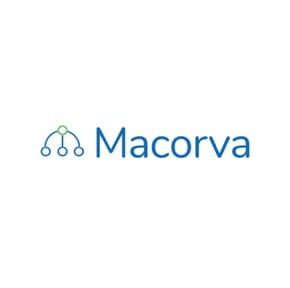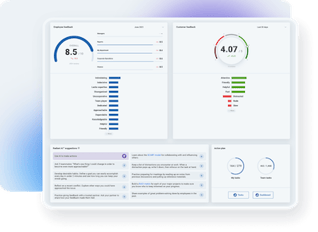
Employee Recognition: How to Spot and Reward Your Silent Superstars & Quiet Achievers
Employee recognition is more than just a pat on the back; it’s a powerful driver of engagement that contributes to a host of positive outcomes in the workplace. Research has shown that when employees feel recognized, they exhibit more drive and determination, forge better work relationships, and feel a stronger connection to their company. Given these benefits, it’s no surprise that many companies have implemented formal recognition and rewards programs.
However, traditional recognition methods often overlook "silent superstars" or "quiet achievers" —those introverted high performers who consistently deliver exceptional results without seeking attention or praise. As we look toward employee recognition in 2026 and beyond, identifying and recognizing these hidden talents will become increasingly important.
According to a recent Gallup report on the employee recognition in the workplace, senior leaders are already giving increased attention to the power of recognition, with 50% more agreeing to valuing these programs at their organization. These programs can take various forms - from financial rewards and gift cards to personalized notes from the CEO and exclusive invitations to special events. Recognition programs are fantastic tools for showing employees that their hard work doesn’t go unnoticed.
The 2025-2026 Recognition Landscape
Despite increased investment in recognition programs, global employee engagement dropped notably in 2024. Only 21% of employees reported feeling engaged at work, marking the first decline in four years.
Additionally, recent data indicates that 74% of workers say they'll leave their current roles when economic conditions improve if they don't feel genuinely appreciated. Recognition frequency also remains inconsistent: while 31.5% of employees now receive recognition weekly, nearly half (49%) still wait a month or longer for acknowledgment.
These data points prove that recognition speed and specificity, not just formal programs, determine loyalty. To retain talent and drive engagement in the coming years, organizations must prioritize timely, personalized recognition that reaches every employee — including quiet achievers and silent superstars.
Some Key Benefits of Recognizing Employees:
- Boosts Engagement: Recognized employees are more engaged, leading to increased productivity and better work relationships.
- Enhances Company Connection: Recognition strengthens employees’ connection to the company, increasing loyalty and retention.
- Drives Performance: Recognized employees are more driven and determined, leading to improved performance and results.
However, there’s one area where these programs often fall short — they don’t always identify and recognize all of the top performers in the organization. To get the highest ROI from your recognition program (in the form of a highly engaged workforce), it’s crucial to have a robust framework in place for spotting standout performers.
This is where the concept of the “Silent Superstar” comes into play. These are the employees who consistently deliver great results but tend to fly under the radar of a typical employee recognition or talent identification program.
Characteristics of Silent Superstars:
- Leadership: They act as formal or informal leaders, influencing their peers in positive ways.
- Respected: They are highly regarded by their direct and indirect reports.
- Cross-functional Collaboration: They work exceptionally well across functional and departmental lines.
- Deliver above-target results quietly: Consistently exceed expectations without drawing attention, Gallup calls them "invisible contributors."
- Often introverted: They do not publicize their own achievements and results. and prefer "deep work" over public praise.
So, how can you ensure your standout employees don’t go unnoticed?
Here are six ways to find the Silent Superstars in your organization so that you can recognize them for their efforts and contributions:
1. Examine the Remote Employee Population
In today’s digital age, remote work is becoming increasingly common. According to research, a staggering 4 in 10 jobs allow some amount of remote work. In many instances, these remote employees are able to deliver impressive results without the constant supervision of managers. This isn’t to say that managers are clueless about their remote employees’ tasks, but they might not have a complete understanding of the how behind the results. For instance, when remote employees navigate a difficult personality or spearhead a cross-functional project, their managers might only have a surface-level awareness of the effort they’ve invested or the outcomes of that effort.
Interestingly, the remote employee population is often a breeding ground for “Silent Superstars”. The valuable contributions of these high-achieving employees risk going unrecognized simply because they are not working from the office every day. It’s important to note that these employees shouldn’t have to give up the flexibility of remote work just to gain recognition for their accomplishments.
Employee feedback is especially critical in hybrid and remote environments because it provides managers with deeper insights into employee contributions that might otherwise remain hidden. Feedback from peers and cross-functional colleagues can reveal strengths and achievements that managers may not directly observe.
To ensure you're effectively capturing these valuable insights and recognizing your Silent Superstars, consider implementing the following strategies:
- Active Praise: Managers should make a conscious effort to acknowledge a job well done. This praise should not just be limited to private conversations, but should also be shared with other managers and teams.
- Training Opportunities: Offering training programs can be an effective way to recognize and further develop their skills and abilities.
- Consideration for New or Expanded Roles: Silent Superstars should be considered for new roles or given opportunities to expand their current roles. This not only recognizes their contributions but also provides them with opportunities for growth.
It’s crucial to recognize the Silent Superstars within your remote workforce. They may be out of sight, but their contributions should never be out of mind. With the right recognition strategies, these remote employees can continue to excel in their roles, contributing significantly to the success of your organization.
Explore Macorva's employee feedback solutions to get a full picture of employee impact in hybrid and remote teams.
2. Explore the Entry-level and New-hire Population
When it comes to the world of work, visibility often plays a crucial role in an employee’s career progression. However, new hires and those in “boots on the ground” roles often find themselves with limited visibility beyond their direct manager. This is especially true for new hires who haven’t had the time to establish a reputation outside their immediate work group. Moreover, annual succession planning in many companies tends to focus on managers, which may lead to overlooking the potential in new employees or those in entry-level roles.
But here’s the thing: within these groups, there could be hidden gems — the “Silent Superstars”. These individuals might not be in the spotlight, but they have the potential to make a significant impact. Recognizing these valuable employees early on is crucial, especially as Gen Z increasingly enters the workforce. In fact, Gen Z cites "being noticed for hard work" as a top loyalty driver-even beating out pay.
Here are some traits that can help identify these Silent Superstars:
- Questioning the Status Quo: Silent Superstars aren’t afraid to challenge existing norms. They’re the ones who are constantly looking for ways to improve efficiency and streamline processes.
- Continuous Learning: They have an insatiable thirst for knowledge. Silent Superstars value and actively seek out opportunities for continuous learning, always looking to expand their skill set.
- Team Players with Leadership Potential: They’re the glue that holds the team together. Silent Superstars are strong team players who often take on leadership responsibilities, even without formal recognition.
With the right recognition, newly hired superstars won’t stay in their entry-level positions for long. Recognition propels them onto a path of success, enabling them to demonstrate their readiness to take on more responsibility. It also helps them quickly earn the trust and respect of peers and coworkers on other teams.
It’s essential to look beyond the obvious and identify the Silent Superstars within your organization. They may be new hires or in entry-level roles, but with the right recognition and opportunities, they can quickly rise through the ranks and make a significant impact.

3. Review Matrixed Teams
A matrix organizational structure is a powerful tool that can help teams balance geographical, product, and functional priorities effectively. Contrary to what some may believe, this structure isn't exclusive to large or global organizations. In fact, research in previous years has revealed that a whopping 84% of employees are part of a matrixed organization to some degree.
While matrixed teams can foster better communication across the organization, they can also create a bit of a fog when it comes to understanding individual employee contributions. This ambiguity can pose a challenge to employee recognition efforts. For instance, employees who report to multiple managers in a matrixed setup might find that neither manager has a complete picture of their contributions to other teams' success. This suggests that the hunt for Silent Superstars should also involve a comprehensive review of employees who work on multiple teams or report to more than one manager.
Once you've pinpointed the Silent Superstars in your matrixed organization, here are some steps you can take to boost their visibility and recognition:
- Collaborative Management: Bring together matrix managers to discuss strategies for supporting shared employee resources. This can help ensure that all managers are on the same page about an employee's contributions.
- Cross-Matrix Interactions: Seek out additional opportunities for interaction across the matrix. This could be in the form of joint meetings or milestone celebrations that bring together different parts of the matrix.
A matrix organizational structure doesn't have to be a barrier to recognizing Silent Superstars. With a little bit of strategic planning and collaboration, you can ensure these high-performing employees receive the recognition they deserve, no matter how complex your organizational structure might be.
4. Evaluate Company Leaders
Silent Superstars aren’t just high performers; they’re often respected leaders within their teams. In fact, your pool of company managers might be teeming with Silent Superstars who are more focused on letting their team shine than seeking personal recognition.
But how do you spot these Silent Superstar managers? Here are some strategies to help you uncover these hidden gems:
- Look at High-performing Teams: Start by examining teams that consistently deliver strong performance and exhibit a solid sense of cohesion. This kind of team culture doesn’t just happen by accident; it’s usually the result of a strong team leader who might not be as visible to the rest of the organization as they should be.
- Listen to Employee Feedback: Employee feedback is a goldmine of information when it comes to identifying Silent Superstars. By tuning in to what employees are saying, you can get a sense of who the respected leaders are within your organization.
- Trawl for Talent: McKinsey suggests taking a proactive approach to talent identification. This could involve “trawling” for talent - using social networking and surveys to identify employees who are viewed by others as having strong leadership capabilities.
- Pay Attention to Peer Recognition: Peer recognition can also be a powerful indicator of Silent Superstars. If an employee is frequently recognized by their peers, it’s a good sign that they’re a respected leader within their team.
In summary, Silent Superstars often make excellent managers, but their humility and focus on their team can sometimes make them harder to spot. By using strategies like examining high-performing teams, listening to employee feedback, trawling for talent, and paying attention to peer recognition, you can uncover these hidden leaders and give them the recognition they deserve.
5. Help Managers Identify Their Top Performers
Identifying Silent Superstars within your company isn’t just about looking at performance metrics; it also involves equipping managers with the right tools to spot and recognize these hidden gems. Some managers might not fully grasp the significance of acknowledging the contributions of their Silent Superstars, while others might not know how to go about it.
There might also be managers who are reluctant to highlight their top performers, fearing they might lose these valuable team members to promotions or transfers to other teams. Regardless of the reason, there are several tools and strategies you can use to help managers identify the Silent Superstars within their teams:
- Surveys: These can be used to gather feedback about individual performance and team dynamics, helping to highlight potential Silent Superstars.
- 360-degree Feedback: This comprehensive feedback system involves gathering insights from an employee’s subordinates, colleagues, and superiors, providing a well-rounded view of their performance.
- Informal Feedback: Casual conversations can often reveal valuable insights about an employee’s performance and potential.
- Manager Training: Providing training for managers can help them understand the importance of recognizing their top performers. This could involve workshops, seminars, or one-on-one coaching sessions.
Once managers understand that identifying and recognizing their Silent Superstars can make them more effective leaders, they’re likely to do it more consistently. In short, giving managers the right tools and training can play a crucial role in uncovering the Silent Superstars within your organization, ensuring these high performers get recognized.
6. Leverage Unfiltered 360-degree Feedback
Employee feedback software is a powerful tool that can help uncover Silent Superstars within your organization. This software is designed to gather 360-degree feedback from managers, peers, and direct reports, providing a comprehensive view of an employee's performance. Interestingly, it often reveals a common trend among Silent Superstars: they tend to receive higher feedback scores from their peers and direct reports than from their managers.
Studies have shown that organizations using 360-degree feedback experience an average performance improvement of 14.9%. By leveraging this comprehensive feedback approach, companies can more effectively identify hidden talent, recognize quiet achievers, and drive meaningful improvements in employee performance and engagement.

“My goal with doing unlimited 360-degree feedback as part of our survey was to figure out who are the top performers—not just from my perspective as a manager, but from their peers. Because the people who understand what’s really going on are the people actually involved in the process.”
Chief Executive Officer | Mass Medical Storage
Here's how 360-degree feedback can help identify Silent Superstars:
- Holistic View of Performance: Both qualitative and quantitative, 360-degree feedback provides a complete picture of an employee's strengths and weaknesses. This feedback isn't just limited to managers and coworkers in the same department; it also includes input from individuals outside the department, offering a broader perspective on the employee's capabilities.
- Identifies Disconnects: This comprehensive feedback can highlight any disconnects between a manager's perception of an employee and the experiences of that employee's peers or direct reports. This can spark a conversation about the cause of the disconnect and how to address it.
- Informs Decision Making: The insights gained from 360-degree feedback can inform senior leaders and HR about employees' capabilities, helping them make informed decisions about promotions, training opportunities, and recognition.
Employee feedback software and 360-degree feedback can be instrumental in identifying Silent Superstars within your organization. By providing a holistic view of an employee's performance and highlighting any perception gaps, this feedback can ensure that all high-performing employees are recognized for their contributions.
How to Enable Silent Superstars & Quiet Achievers at Work
Identifying Silent Superstars is just the first step. To fully unlock their potential and ensure they thrive, organizations need intentional strategies that empower these quiet achievers to succeed. Consider these practical approaches:
- Foster psychological safety: Create an environment where employees feel comfortable sharing ideas and feedback openly.
- Train managers as sponsors: Equip leaders to proactively advocate for quiet performers in meetings and talent discussions.
- Offer flexible visibility channels: Provide multiple ways for employees to showcase their work comfortably, such as asynchronous updates or smaller group presentations.
- Build structured mentorship programs: Pair quiet achievers with mentors who can guide them toward growth opportunities aligned with their strengths.
- Create transparent promotion pathways: Clearly communicate criteria and processes for advancement, ensuring all employees understand how to progress.
- Spotlight internal success stories: Regularly highlight examples of quiet achievers internally to inspire others and reinforce the value of diverse working styles.
By intentionally supporting Silent Superstars through these targeted actions, organizations can cultivate an inclusive culture where every employee feels valued, recognized, and empowered to contribute their best work.
Conclusion
Silent workers aren’t just nice-to-have; they’re your highest-ROI retention asset. Having the right tools to understand the impact of every employee in a company, whether they are new hires, matrixed, or remote, is the key to identifying and recognizing employee standouts such as Silent Superstars. Employee feedback software allows managers, peers, and subordinates inside and outside an employee’s team to speak about their experiences with the individual, putting company leaders in a better position to recognize them and construct a development plan that will help them make an even stronger impact.
Ready to uncover and recognize your company's quiet achievers? Explore how Macorva can support your recognition efforts and help every employee feel seen and valued. Learn more in an instant demo now.
FAQs about Silent Superstars
A silent worker is an employee who consistently achieves high-quality results without actively seeking attention or public acknowledgment. These individuals typically prefer to contribute quietly and effectively behind the scenes.
Quiet achievers provide significant value in the workplace by consistently exceeding expectations, driving team success, and improving overall productivity without demanding recognition. Their steady contributions often lead to improved team cohesion and increased returns on investment.
Quiet achievers and silent superstars often prefer personalized, low-key employee recognition rather than public praise. Consider private praise from managers, personalized notes, discreet team shout-outs, extra PTO, or professional development opportunities to ensure recognition feels meaningful and motivating.
360-degree feedback provides employee recognition data from peers, managers, and direct reports, creating a complete picture of an employee’s performance. This continuous feedback loop helps managers uncover hidden talent and identify strengths of quiet achievers and silent superstars that traditional performance reviews often miss.
Editors note: this blog was originally published in October 2019 and has been updated for accuracy and comprehensiveness.









